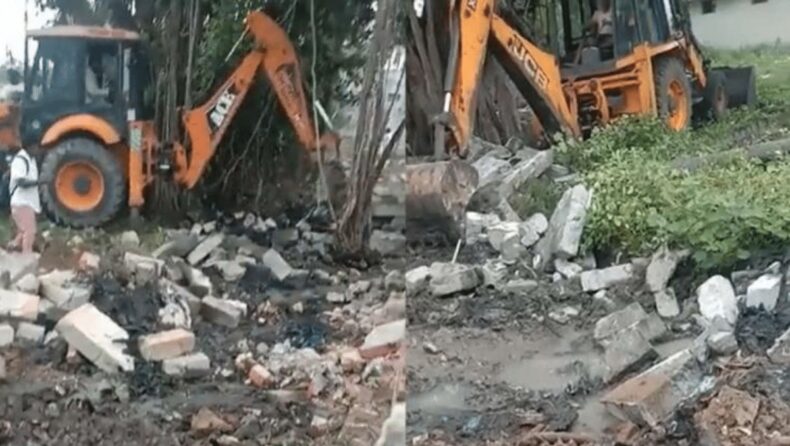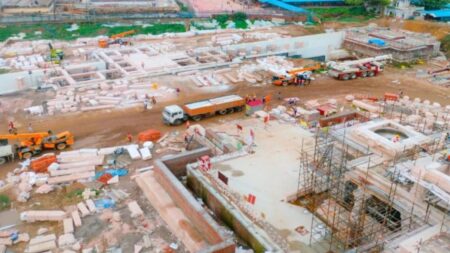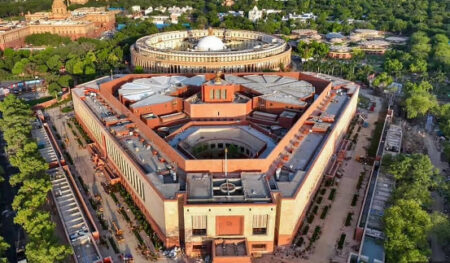According to The News Minute, the Thiruvallur district administration in Tamil Nadu tore down a caste wall in the village of Thokkamur on Tuesday.
The wall, which was built in 2016 for “flood prevention”, has been separating the village’s Dalit community from the Adheenam (a type of Hindu monastery) property of the adjoining temple for the past six years.
The Tamil Nadu Untouchability Eradication Front (TNUEF) general secretary, Samuel Raj, said to The News Minute after the wall was taken down: “It is time for the state government to take the initiative on its own, identify caste walls like this in the state, and dismantle all of them.”
What is a Caste Wall?
In the state of Tamil Nadu, caste walls, which are constructed along with Dalit communities to separate them and limit their mobility, are frequently seen. These barriers prevent Dalits from entering nearby settlements of non-Dalit castes, keep them away from temples, and make it harder for them to get home from the road.
They, therefore, act as contemporary methods for sustaining untouchability long after it has been legally abolished. Several of these fences have been taken down by the government in the last few years as a result of community demands and objections. But as Raj’s remark implies, it’s already too late.
Take, for instance, the tale of a wall in the Nadur hamlet of the Coimbatore district. A resident of an upper caste originally constructed the wall to divide himself from his Dalit neighbours; in 2019, strong rains caused the wall to fall, killing 17. At the time, the incident caused a widespread outcry.
However, after receiving approval from the city authorities, the wall was rebuilt anew within a year. A caste wall has divided the Dalit and dominant OBC communities in another village, Uthapuram, in the Madurai district, for more than three decades.
When the authorities partially demolished the 200-meter-long wall in 2008, several OBC families left the community and relocated to another village three kilometres away. Additionally, caste barriers have been reported to be erected in villages as recently as 2021.
These occurrences demonstrate the continued impact caste has on people’s lives in Tamil Nadu, as does the prevalence of caste walls there. The functions of these walls and the responses of the dominant and upper caste members also demonstrate how pervasive untouchability remains and how trivial its manifestations frequently seem.
Given that Tamil Nadu gave birth to self-respect and Dravidian movements—anti-Brahminism movements that rejected the hierarchical notions of gender and caste and espoused equality for all—this can be perplexing at times. These movements attracted Dalits and OBC castes to unite in opposition to the Brahminical hierarchy.

In actuality, caste atrocities against Dalits didn’t instantly stop when Brahminic rule was rejected. Dalits and other non-Dalit, non-Brahmin lower castes frequently engage in violent intercaste riots and conflicts in Tamil Nadu. Caste conflicts in southern Tamil Nadu, according to academic Gail Omvedt, “prove the persistence of the casteist attitude among even poor OBCs…”.
Caste continues to be closely tied to both occupation and political power, notwithstanding formal openness and some social mobility. Therefore, despite the state having a long history of radical anti-Brahminism and electing a party that claims direct ancestry from that radical movement, Dalits in Tamil Nadu continue to experience caste walls and atrocities.
Since Dalits in Tamil Nadu have continued to be oppressed, even under Dravidian regimes, they have turned to alternative movements and other means of assertion to express their social and political goals. One of these emerging sites of resistance is the powerful cultural movements in which Dalits tell their stories through poetry, music, film, and art.
Among others, musicians Arivu and Tenma, as well as filmmakers Pa. Ranjith and Mari Selvaraj, actively contribute to the development of this Dalit resistance culture.
Cases in adjacent states also provide options for daily resistance. For instance, in Karnataka, a Dalit boy’s family was asked to pay a fine of 60,000 rupees for touching a wooden pole of a temple they were not permitted to enter.
In response, the family removed all images of Hindu deities from their home and replaced them with statues of the Buddha and Dr. Ambedkar. It represents letting go of relying on Brahminic rituals and customs for approval.
Following repeated requests from the TNUEF, the caste wall at Thokkamur was taken down, illuminating yet another front of resistance. The administration, however, “cannot keep waiting for organizations like ours to point out where these walls are before they take any action,” as Raj argues to The News Minute.
The state needs to take much more proactive measures against the institutions and people that support segregation and untouchability. (Source: The Swaddle)
Read More: To be an offence under SC/ST Act, Hurling casteist abuses must be in a public place or public view













